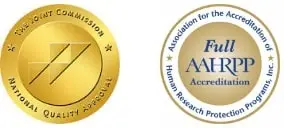Clubfoot Treatment – FAQs
Clubfoot, or talipesequinovarus, is a treatable birth defect that affects approximately 150,000-200,000 children each year. When clubfoot occurs the foot is twisted inward and down, and this condition occurs during development in the womb. Physicians have observed that fetuses that develop clubfoot start with a normal foot and then the foot begins to turn inward around the third month. Most children born with clubfoot are not missing any bones, muscles, or connective tissue. It is a congenital condition, meaning that when it occurs it is always present at birth. It is one of the most common congenital deformities. One or both feet may be affected and the affected feet can range from relatively flexible to stiff and rigid. The condition is not painful for the new born, though when a child gets to walking age, walking with an uncorrected clubfoot can be very painful and difficult, if not impossible.
Researchers do not know exactly what causes clubfoot. Hence the term “idiopathic” has been coined for these deformties. However, if either of the parents were born with clubfoot, their children are more likely to have it.
For years, clubfoot has been treated by casting and/or surgery. Over fifty years ago Dr. Ignacio Ponseti developed a method for treating clubfoot that requires the use of over the knee casts and special protocol. The method consists of using a series of casts, gentle manipulation, a minor surgical procedure to complete correction and the use of a special brace (Foot-Abduction Brace). Proper compliance with this brace is important to get good results. This treatment which has a consensus regarding Idiopathic Clubfeet in infancy, is followed by majority all over the world,.It is 90+% effective and it is the most cost effective treatment with no side effects. Treatment should start soon after birth.
- In non-traumatic cases, the commonest solitary disorder is an Idiopathic Clubfoot (Congenital Talipo-equino-varus). The Ponseti method of manipulation & casting accepted world-wide, is the standard treatment followed in most cases during infancy.Rigid Bilateral Clubfeet in an infant treated by Ponseti method of manipulation and casting – good result
- Older children with rigid clubfeet as well as the teratologicalvatiety require appropriate surgery. Relapsed Rigid Clubfoot in a 5 year old treated by postero-medial soft-tissue release and calcaneo-cuboid fusion – good result


